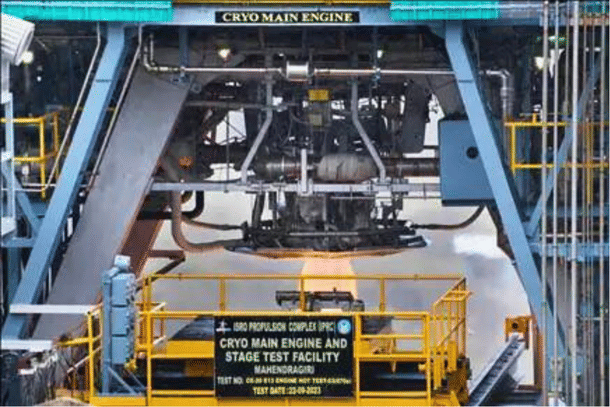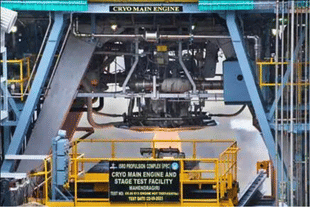Science
ISRO's CE20 Upgraded Engine Roars To Success In Gaganyaan Qualification Test, Achieves 22-Tonne Thrust Triumph
Swarajya News Staff
Sep 25, 2023, 10:03 PM | Updated 10:03 PM IST
Save & read from anywhere!
Bookmark stories for easy access on any device or the Swarajya app.


In a significant achievement, the Indian Space Research Organisation (ISRO) has announced the successful completion of the CE20 E13 engine hot test, marking a pivotal step in the Gaganyaan qualification as well as thrust qualification, hitting 22 tonnes.
The engine, developed by the Liquid Propulsion Systems Centre (LPSC) in Valiamala, underwent rigorous testing at the ISRO Propulsion Complex in Mahendragiri on 22 September.
The CE20 engine is a critical component, serving as the powerhouse of the cryogenic upper stage responsible for propelling the upper stage (C25) of the LVM3 vehicle.
It has already demonstrated its prowess by operating successfully at a thrust level of 19 tonnes in six successive LVM3 missions, including missions like Chandrayaan-2, Chandrayaan-3, and two commercial OneWeb missions.
In a bid to enhance the payload capacity of the LVM3 vehicle, ISRO has embarked on an upgrade project for the CE20 engine.
This initiative involves transforming the upper cryogenic stage into the C32 stage, which boasts increased propellant loading capacity.
Moreover, the engine is being modified to operate at a higher thrust level of 22 tonnes.
To ensure the engine's readiness for critical missions, a series of ground hot tests were deemed necessary, and the CE20 engine hardware designated as E13 was chosen for both Gaganyaan qualification and 22-tonne thrust-level operations.
The journey towards achieving a 22-tonne thrust capability commenced with E13 HT-01, a test focused on engine tuning, conducted successfully for a 50-second duration, ISRO said.
This initial test laid the foundation for subsequent trials.
E13 HT-02 marked a significant milestone, taking place on 30 August, with the engine operating flawlessly for an impressive 720 seconds. This test served as a testament to the engine's reliability and stability.
The third and critical hot test, E13 HT-03, was the defining moment in completing the CE20 engine qualification for the Gaganyaan program.
On 22 September, this test took place at the state-of-the-art test facility located at IPRC, Mahendragiri.
During this pivotal test, the CE20 engine operated at the coveted 22-tonne thrust level for a duration of 670 seconds.
Both the engine and the testing facility exhibited excellent performance, meeting all the designated performance parameters.
The successful completion of E13 HT-03 signifies the culmination of rigorous testing and demonstrates the readiness of the CE20 engine for the Gaganyaan programme.
With all the requisite tests now successfully concluded, the CE20 engine stands ready to meet the demanding requirements of the Gaganyaan mission as well as India's future space endeavours.
ISRO has shared a video of the CE20 E13 engine hot test here.




